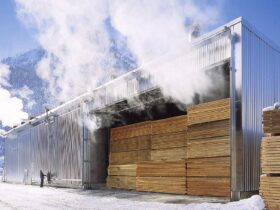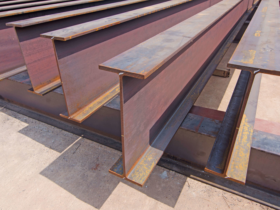Modern construction standards are increasingly introducing natural materials. One of the options for building a house made of natural materials is a wooden house made of bars or logs. But natural materials are subject to attack of various pests, which entails expensive repairs. Therefore, the owner of the log house needs to immediately understand what kind of material is wood and how to properly care for it in order to protect the wood.
Inside the wood consists of long cells of wood tissue. Between these fibers there are various organic substances — oils, resins, wax and so on. In natural wood, there is always a certain amount of moisture in the form of steam or condensate.
The substances located inside the wood give the material a certain color, the ability to withstand destruction and decay, a specific smell. It is the internal structure of the tree in the form of fibers of a large length that determines the strength of the material, its properties to delay heat and sound, mechanical qualities. If the material is not isolated from the external environment, the moisture content inside the tree constantly changes, when the weather is changed.
The internal humidity in the material of the tree is determined by how well the material was dried, and how much water it got into it after installation. The amount of moisture located at any moment in the pores and cracks of the tree is considered to be natural moisture. Humidity is calculated as a percentage of the total weight of the material.
Technological production and wood protection
Technologically, the production of lumber provides for a reduction in humidity to processing to 15-19 %. These indicators give a guarantee of the preservation of the geometric size of the product for a long time after manufacturing.
In the case when thick logs are used for log cabins, it is difficult to provide such a level of humidity. Moreover, humidity along the entire trunk can change significantly. The humidity is determined by the device. If, according to such a meter in a layer of 3 cm thick at the surface, the humidity will be 19 %, then in the depths of the barrel, humidity usually exceeds this indicator.
The tree itself, due to the evaporation of moisture, gradually loses water until the state of equilibrium between it and atmospheric moisture is reached. Such a water content inside the material is called a balanced.
During the loss of water, the sizes of wood parts change. There is a natural Lesser. Therefore, changes in the size of parts are necessarily occurred compared to geometric dimensions in the manufacture. The fibers themselves inside the material become denser and less. In this case, an effort arises, under the influence of which cracks occur in a log along the fibers. Such cracks depart from the core logs outward in the form of rays. Such cracks actively absorb a drop of dew or rain outside, therefore, to preserve the house from wood, you need to protect the surfaces from moisture from getting on them. It is advisable to perform special processing, which will prevent water accumulation inside the material.
The material due to a change in atmospheric conditions will swell and compress when changing the conditions of the external environment. Changes in the size of the finished product due to humidity fluctuations are gradual bonding. These size fluctuations often cause jamming and creaks of previously adjacent wooden doors.
If the tree is affected by a blue fungus, then channels arise for penetration deep into the water material. At the same time, the wood itself changes its color, its water permeability is growing. This does not very much harm the material in dry and cold weather, but it is better to protect the tree in advance from the lesion with this fungus.
The owner of a wooden house must remember that with a minimum water content inside the material, its service life is significantly growing. It is low humidity that reduces the weight of the material and facilitates its operation. It is better to process a tree from the surface with various compositions that protect it from moisture and improve the aesthetic properties.
Ways of drying
Modern manufacturers of wood products use various drying methods. Drying stoves are used to accelerate drying. The processing of the material in them reduces weight, facilitates the machining of lumber. An additional advantage of this type of processing is the destruction of insects and other pests inside the material.
The tree supplied to the market has a guarantee of a certain percentage of humidity. This is achieved due to natural or artificial drying. The use of dead trunks in the work makes it possible to put them into production immediately.
If you use natural air drying, then to ensure the production cycle you need to have large reserves of materials. The trunks dried in accordance with technology have the required humidity level. But some violate the technological requirements and use unnecessary, or even freshly chopped wood.
When designing buildings, amendments are laid on the shrinkage and shrinkage of wood after the completion of construction work. In order to reduce such changes in sizes, it is advisable to use glued logs — in them the content of the water is the smallest.













Оставить коммент.